This is a Jena Contax, a 35mm rangefinder camera made by Carl Zeiss Jena, in Saalfeld, Germany under direction of the Soviet government after World War II. In the time leading up to Germany’s loss in the war, the Soviet Union had eyed the Zeiss-Ikon Contax for war reparations and wanted to build their own copy of it in Kiev, Ukraine. Before they could do that, they first needed to recreate the assembly lines and learn how to build it. A special team of Zeiss employees, under Soviet direction, were assembled in Saalfeld and built an unknown number of these Jena Contaxes as a proof of concept.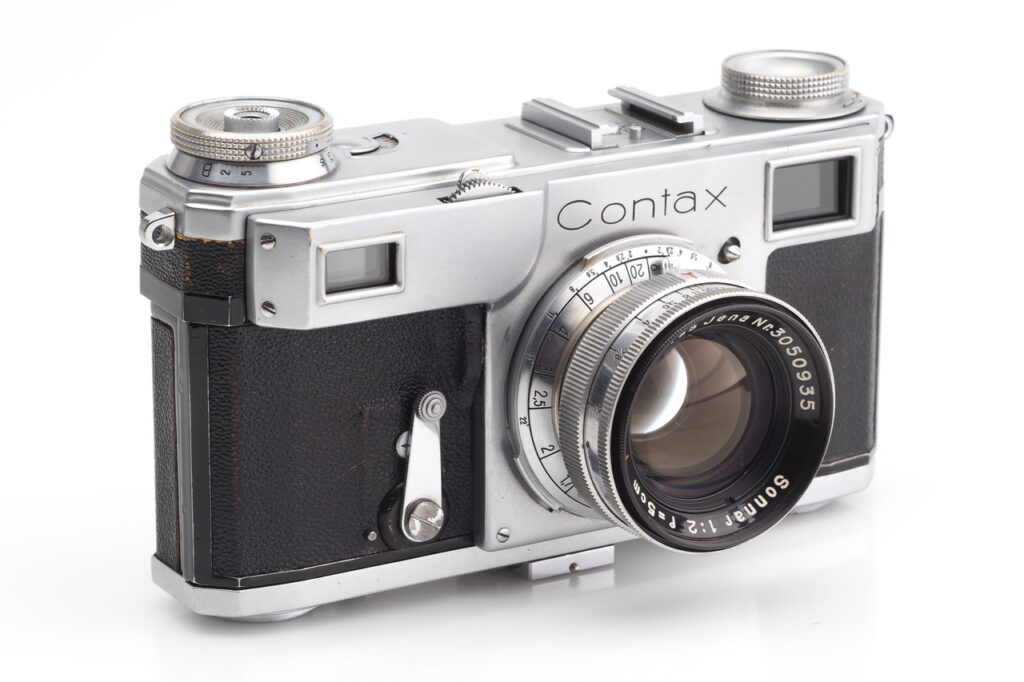
Prologue A large amount of the research for this article was done by reading past issues of the Zeiss Historica newsletter from 1979 to 2016 which were donated to me by Larry Gubas in 2019. With his permission, I have made all issues available on this site, free of charge, for anyone who wants to read them.
The authors who wrote these articles were then, and still are considered to be experts in the history of Carl Zeiss and Zeiss-Ikon. The articles originally published in Zeiss Historica are some of the best researched and thorough accounts of Zeiss history ever written. In the years since these articles were originally written, new information has continually been discovered, expanding our understanding of the complex history of Zeiss and its many iterations. Sometimes, information published in 1999 which was the most accurate account of information at that time, was contradicted in later issues as new information became available.
I have done my best to piece together the history of the Carl Zeiss Jena Contax based on these articles, while taking into account when they were published, favoring later articles over earlier ones, while summarizing the often confusing and changing history of these cameras. I have included links below to specific articles in different issues when relevant for anyone wanting to read more than what I’ve included here.
I did my best, and I hope you enjoy it.
The Prewar Contax Made After the War
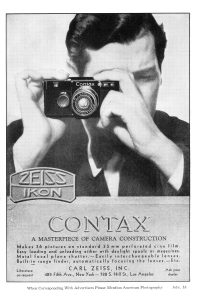
For those who collect cameras, you are certainly aware of the Zeiss-Ikon Contax. This series of cameras debuted in 1932 with the release of the original Contax I, designed by a team of engineers led by Dr. Heinz Küppenbender and produced until 1936. Many historians believe these original Contaxes were prematurely rushed to the market as they required almost continual updates and improvements to the camera’s original design. Contaxes made between 1932 and 1936 saw many changes, including the addition of slow speeds, improvements to the reliability of the shutter, changes to the shape of the body, a rearrangement of the rangefinder windows, and several other minor cosmetic changes.
While Zeiss-Ikon had reason to be proud of their Contax camera, it was being outsold by the Leitz Leica by a wide margin. The simpler, less costly, and more reliable Leica was gaining worldwide recognition as the best German 35mm rangefinder, and Zeiss-Ikon knew that they needed to make significant changes if they wanted to remain competitive.
Not willing to completely abandon the Contax entirely and start over from scratch, Zeiss-Ikon demanded that a new model, sharing as much as possible with the original be made. In 1936, a heavily updated Contax II was released. The new Contax cameras were designed under the leadership of Hubert Nerwin and improved upon the complex and often fragile design of the earlier cameras.
Improvements to the reliability of the shutter were made, along with changes to the body, rangefinder, and other parts of the camera which allowed the new Contaxes to more fairly go head to head with the Leica. Unlike the Contax I which saw almost continual updates to the design, the Contax II and later Contax III were much more mature and didn’t need regular updates. Manufacture of the Contax II and III continued mostly unchanged for about 7 years until 1943 when pressure from Allied forces resulted in a stoppage of production.
Although production and assembly of the Contax II and III was done at the old Ica plant at 76 Schandauer Strasse on the outskirts of Dresden, all of the design work, original blueprints and the manufacture of the tools and dies used to build the Contax were done at the old Reika plant, also on the very edge of the city. Around 1943, Zeiss management anticipated that if the tides of war were to change, that Dresden would be a logical target for Allied forces, so they began the evacuation of a significant portion of the Contax assembly lines, including machinery, dies, tools, production drawings and other pieces to Jena, which would not have been as desirable of a target for the Allied forces.
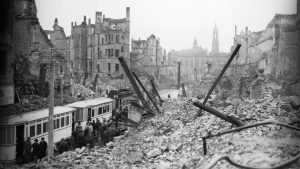
This proved to be a wise decision as between February 13 through the 15th, 1945, Dresden was the target of a massive coordinated attack by the United States and Britain consisting of four separate raids in which 3,900 tons of high-explosive bombs and incendiary devices were dropped on the city. These raids were responsible for the destruction of around 1,600 acres of the city center with an estimated 25,000 people killed. The attacks were not specifically targeting Zeiss or any particular camera factory, rather the large amount of overall manufacturing infrastructure and transportation that was located there. Factories on the edge of Dresden like where the Contax was built weren’t as badly damaged, so some remaining equipment did survive.

While the bombing of Dresden was a significant turning point in the war, it was clear much earlier that things weren’t going well for the Germans, and many factory workers and perhaps even some managers envisioned a destruction of their city and the German economy, not unlike what happened after Germany’s loss in World War I. It is believed that equipment including spare parts and drawings were smuggled out of the factories and taken to other locations. Factory workers with the knowledge to build Contax cameras had already started planning on what useful skills they might be able to use to provide for themselves and their families after the war.
A lot of what exactly happened during this time is uncertain and prone to a lot of speculation as it wasn’t a good idea to fully document what you were doing during your country’s imminent loss in war. Loyalty to Hitler and German authorities caused a lot of fear for average German citizens, so exactly how and what these people did isn’t certain, but in the immediate years after the war, historians such as Charles Barringer, Larry Gubas, and an interview with former Zeiss worker Werner Widder have helped us piece together a plausible version of what happened next.
What Do We Know For Sure?
If you ignore all the speculation and only look at what can be proven, we know that official production of the Zeiss-Ikon Contax II and III ended in 1943. In February 1945 at the Yalta Conference, what would eventually become East Germany, including the areas of both Dresden and Jena, would become the Soviet Occupation Zone in Eastern Germany (the German Democratic Republic or what we call ‘East Germany’ didn’t become an official country until October 1949).
When Germany surrendered in May 1945, the Soviet Union was not in an immediate position to move into eastern German cities as this took considerable manpower and planning to move such a large number of people and resources.
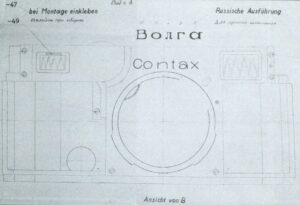
Even before the Soviet arrival in Dresden and Jena, plans existed for a Soviet version of the Contax which would be built using the original machinery and perhaps some German workers in a new factory in Ukraine. A schematic to the left shows a camera called the “Volga” was planned, but we know that the name Kiev was instead chosen.
Production of the first Soviet Kiev cameras began in Kiev, Ukraine in late 1947 using Soviet employees and many left over German parts. These early cameras used faceplates which were originally made with the name “Contax” and were later restamped with their Russian names. When these parts are removed, the backside still shows the indentations of the “Contax” name on the underside. The Soviet Union would continue making Kiev cameras with mild updates over the next several decades, finally ending production in 1987.
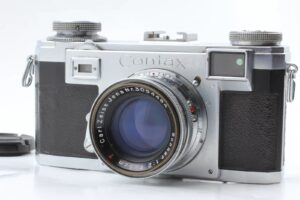
In Stuttgart, West Germany, an Allied supported version of Zeiss-Ikon AG would re-release the Contax rangefinder with a redesigned body and many improvements as the Contax IIa and IIIa in 1950 and 1951 respectively. The new Contaxes were based on improved designs that Hubert Nerwin worked on during the war. Although Nerwin would leave Germany in 1947, his drawings and ideas were incorporated into the new cameras, featuring improved shutter designs with aluminum rather than brass slats, a simpler rangefinder with shorter rangefinder base, more compact and lightweight bodies, and a number of other changes. The improved Contax IIa and IIIa cameras would remain popular choices for photographers throughout the 1950s and would stay in production until 1961.
A Seven Year Gap Between German Contaxes
Beyond this known history, there should be a gap in production from 1943 and 1950 of any official German Contaxes, but there isn’t a gap. Some cameras were built during this time. Early postwar Contax rangefinders can be broken down into one of four broad categories. They are:
-
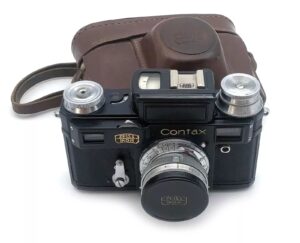
A counterfeit Contax sold by a Ukrainian eBay seller. Fakes – Contax cameras, especially rare Contaxes are desirable and prone to counterfeits, so it should not be a surprise to know that many postwar Contax cameras are fakes. Of the four types of cameras discussed here, this is the one you are most likely to see. In almost every instance I can find, a fake Contax is actually a Soviet Kiev camera modified to look like a Contax. As I write this, at least a dozen or so can be found for sale on eBay from Ukrainian sellers with many more likely sold on other auction sites. To their credit, most of the people selling these cameras accurately list them as Soviet copies disguised to look like Contaxes. But even without that description, a telltale sign of a fake is that they’re almost always black, they almost always have a Zeiss-Ikon or sometimes a Carl Zeiss Jena logo on the front plate, and many times they have a meter on top. One final hint that these are fake is that these cameras usually sell for around $200, when in reality a genuine postwar Contax II is extremely rare and should fetch prices in the range of several thousands of dollars.
-
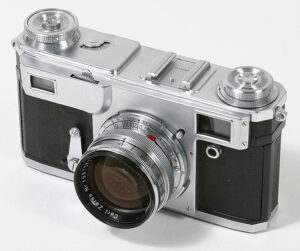
These “no name” Contaxes were Soviet built Kievs without a name stamped into the front. ‘No Name’ Contax Fakes – A small number of legit Kiev cameras were produced as “no name” Contaxes, in which no name was stamped into the front plate. These were produced by the Soviet Union as a result of a lawsuit which awarded the use of the “Contax” brand name to the West German Zeiss-Ikon AG plant. Although the Soviet and East German camera makers could use the name Contax, it was only allowed for sale within those countries. If a Contax camera was to be sold in West Germany, North America, or elsewhere in Europe, it couldn’t legally use the name Contax so that’s why the name was omitted. This is the same reason why the East German Contax SLRs were sold in North America and West Germany as the Pentacon SLR, instead of as a Contax. Although these no-name Contax cameras were never intended to pass as Contax fakes, this didn’t stop unscrupulous owners from re-engraving or stamping the Contax name into these cameras. The strange thing about this type of fake Contax is that the no name Contaxes are quite desirable and can fetch a premium if found unmolested. For someone to re-stamp the name “Contax” into a no name Contax would actually devalue the camera.
- Unofficial German Contaxes – It was known, well before Germany’s surrender in May 1945 that things weren’t looking up for the German war effort and in preparation for German failure, many factory workers smuggled parts and stored them in locations outside of Dresden. As production stopped and these workers became unemployed, there was a need to generate income, so some unemployed Zeiss-Ikon factory workers pieced together cameras and sold them to occupation troops or anyone who had money. Early versions of these unofficial cameras were made entirely out of spare parts, but some continued to be produced after the war with a mixture of new and spare parts. Because the shutter was the most difficult part to make, all of these cameras contained prewar shutters. Since these unofficial Contax cameras were made in less than ideal conditions, usually in makeshift factories, the build quality of these cameras is very low and most never worked and as a result usually look to be in excellent condition since they were never used.
-
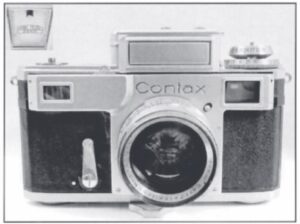
An unfinished Contax III made in Jena. Carl Zeiss Jena Contaxes – The Soviet Union had planned from the very start to relocate what they could from Dresden and Jena to a factory in Kiev to produce their own camera. The original plans were for the camera to be called the Volga, but this was later changed to Kiev. When the Soviet army arrived, Dresden was in disarray and much of the molds and machinery needed to make cameras was destroyed or stolen. Before any cameras could be built in Ukraine, new tooling and machinery needed to be constructed. Furthermore, the Soviets needed sample cameras to study and use as templates for their new camera. As a result, assembly lines consisting of what could be salvaged from Dresden, were reconstructed in a factory in Saalfeld, near Jena. A total of three assembly lines were setup and a series of Contax cameras were constructed by Zeiss employees, using Zeiss parts and machinery, but under Soviet observation. A majority of these cameras were made like the prewar Contax II, but at least four were made like the Contax III. These cameras, unofficially referred to as “Jena Contaxes” are extremely rare and collectible and what a majority of this article will discuss.
American Occupation in Jena
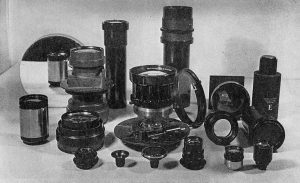
With Germany’s surrender imminent, American occupation forces moved into the Jena area in April 1945 as they were in a better position to arrive there before the Soviets had a chance to. The Americans were well aware of who Carl Zeiss and Zeiss-Ikon were and what the strategic importance of their products and Schott glass would be to the Allied war effort. During their brief occupation of the area, American forces were ordered to relocate key Zeiss and Schott personnel and their immediate families, along with a convoy of documentation, prototype lenses and equipment, and a small amount of supplies to undisclosed locations in Western Germany and elsewhere. Included in this convoy was a collection of about 2000 prototype Zeiss lenses which was taken and transported to the US Signal Corps for analysis. This is briefly covered in Keppler’s Vault 59: Zeiss Sphaerogon Nr. 18, which is based off an article published in the September 1949 issue of Modern Photography.
The Americans knew they had very little time to get in and get what they needed, and because they knew the Soviet Union would not be happy with Americans taking what should have been left to the Soviets, they knew they couldn’t take everything. The Americans withdrew at the end of June 1945 taking what they could, but leaving behind production equipment, and other large scale machinery as it was deemed impractical to move. With the Americans gone and the Red Army still reeling from their losses in the war, for several months the Jena area was unoccupied by any official government.
What exactly happened between the time of the American withdrawal at the end of June 1945 and Soviet occupation in early 1946 isn’t clear as no records were kept and the only stories told varied by those who told them. Assuming that Jena factories were supplied with resources from before and during the war, plus a large amount of equipment relocated there in 1943 and 1944 from Dresden, plus a whole staff of skilled and eager workers, it stands to reason that a decent amount of time went into putting things back together in preparation to make optical goods again. Exactly how long this would have taken is anyone’s guess.
American Occupation in Jena For more information regarding the time American forces occupied Jena between April and June 1945, please read the article “Americans and Russians in Jena” by Bob Nuttall in Zeiss Historica, Volume 24, Number 2, Fall 2002.
The Red Army Arrives
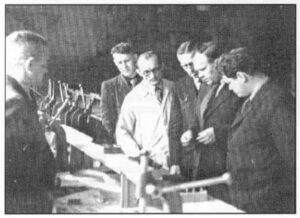
Before the Soviet Army arrived in Jena, plans were already underway for how they would reallocate Zeiss resources for Soviet purposes. A “1946 Plan” was put together which had an ambitious goal of building a Soviet version of the Contax and reallocating other German optical production to the Soviet Union. In addition, the Soviet Union was unhappy about the collection of cameras the Americans took from Jena and included in the 1946 plan a demand that Zeiss workers would recreate as much of the collection as possible.
For the Contax, the biggest problem was that most of the original blueprints and manufacturing equipment from Dresden was destroyed or stolen, so the first order of business was to recreate the production equipment and build sample Contaxes which workers in Kiev could study to base their new camera on. Rather than transfer everything immediately to Kiev and start reconstruction there, work was ordered to begin in Saalfeld, Germany, about an hour drive from Jena. Zeiss workers there were ordered to recreate the machinery necessary to build Contax cameras, and ensure that proper quality control could be maintained throughout the transfer. In total, three complete manufacturing lines were built in the Zeiss factory in Saalfeld. Zeiss employees were not given the plan to relocate to Kiev, and were led to believe that camera production would remain in Saalfeld. History tells us that very few of the Zeiss workers assembling Jena Contaxes were taken to Ukraine, instead Soviet technicians came to Saalfeld to observe the work there which they would then go back home to train their own staff.
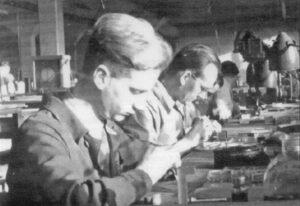
A First Hand Account More detailed information about the early days of Soviet occupation in Jena is told by Werner Widder, who worked at the Saalfeld plant at that time. His first person account is the most detailed history we have regarding this period of time in Jena. This article can be read in Zeiss Historica, Volume 25, Number 1, Spring 2003.
According to Zeiss Historica, Volume 23, Number 1, Spring 2001, in February 1946, Zeiss workers at Saalfeld were ordered to build a total of 3800 cameras between September 1946 and March 1947. The actual number built was only a small portion of that number, likely due to unexpected production challenges, plus constantly changing directives from Soviet leadership. In the first hand account told by Wener Widder, he states that production of the Jena Contax continued in Saalfeld until October 1947.
In October 1947, production of the Contax was halted, and all employees working on them were given a vacation as a reward for their hard work. When workers returned to the factory two weeks later, they discovered that all three Contax production lines were dismantled and put on a train to Kiev, where production of the Soviet Contax would begin. In addition to equipment needed to build cameras, everything else from the factory, including furniture, wiring, furnaces, toilets, even the walls were removed.
In Werner Widder’s recollection of these events, after the Contax lines were sent to Kiev, workers continued putting together cameras from spare parts until at least 1950, suggesting that enough inventory existed for nearly 3 more years. Exactly how many cameras were built, is unclear.
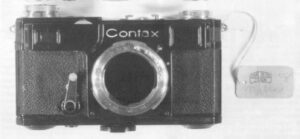
Black and Ivory Contax II at least two black Contax IIs and a couple Ivory Contaxes were produced in Saalfeld by German workers. According to Zeiss Historica, Volume 17, Number 2, Autumn 1995, it is theorized that the Soviets ordered construction of black and ivory Contaxes to test to look of such a camera, although no official black or ivory Contax II or III cameras were ever made in Germany or Kiev.
How Many Were Made?
It is not clear exactly how many Jena Contaxes were made. While the stories told in this article and in Zeiss Historica suggest that the number could be in the several of thousands, that so few ever show up makes a large number implausible. Perhaps more were made and later destroyed, maybe many were lost through time, or maybe there is a warehouse in rural Germany with a stockpile of brand new Jena Contaxes yet to be discovered. Whatever the actual number, as recently as 1999, the total number of documented Jena Contaxes was a little over 100. More have certainly been discovered since then, but I am not aware of a more recent registry of Jena Contaxes.
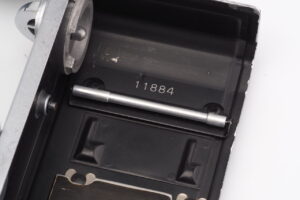
According to Zeiss Historica, Volume 21, Number 1, Spring 1999, the lowest serial numbers are around 6000 and the highest around 30000. The sequence of serial numbers had large gaps and were not consecutive and in at least one case, the same serial numbers were reused (see Zeiss Historica, Volume 33, Number 1, Spring 2011). The best estimate of how many were made is around 1200, but this is wild speculation based on incomplete information. These cameras are very rare, so the true number that were made, is probably much less than that.
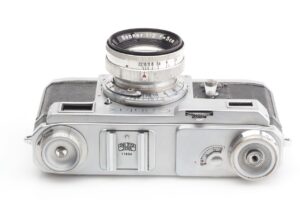
What Does a Jena Contax Look Like?
Although the Jena Contaxes were made by skilled factory workers in an actual Zeiss factory using real Zeiss equipment, this was still a skunkworks operation done under the guidance of unqualified Soviet management using a large number of spare parts. While body molds, lens mounts, and rangefinder assemblies could be reused from prewar cameras, there weren’t any shutters left, so in order to assemble new cameras, the entire shutter mechanism had to be rebuilt from scratch using what was available.
Key changes to Soviet era Contaxes (and later Kievs) were that many internal assemblies which were riveted in early Contaxes were now constructed with more modern stamping processes without rivets. The gold coating used in the rangefinder of prewar cameras was substituted with a less expensive chromium coating. Parts that were chromed in early cameras were now black painted, various parts of the shutter were simplified, internal springs which on early cameras were made of two pieces were now just one. A large number of parts were simplified, some in the interest of using more modern processes, but many to make the camera easier to assemble back in Kiev.
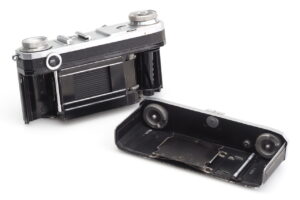
Jena cameras do have some externally different cosmetics which I’ll explain later, but by far the biggest difference was in the shutter. Since Jena Contaxes are extremely valuable today, it would be attractive to a counterfeiter to make fake ones out of other Contaxes or Soviet Kievs. A good fake could look almost identical to the real thing from the outside, but an internal inspection would be required to accurately tell the difference.
Since the only surefire way to authenticate a true Jena Contax is by disassembling the shutter, detailed information about what is different is not common knowledge and cannot be found online. For those who have this information, they are not willing to share it publicly for fear that this knowledge would allow counterfeiters to make more accurate fakes. A list of external differences between a real Jena Contax and prewar Contaxes has already been published, most extensively in Zeiss Historica, Volume 21, Number 1, Spring 1999. I will summarize the differences here, but it is worth noting that genuine Jena Contaxes may not have all of the characteristics below. The presence or lack of one of these characteristics does not prove or disprove a camera’s authenticity.
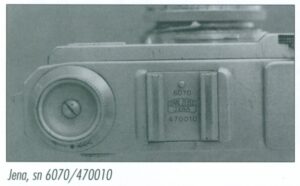 Accessory shoe engraved with Carl Zeiss Jena ‘acromat’ logo, followed by a 4 or 5 digital serial number without alpha prefix. Many fake Contaxes feature either a Carl Zeiss Jena or Zeiss-Ikon logo engraved into the front of the camera to the right of the rangefinder window, which is incorrect. With perhaps one exception (see below), Jenuine Jena Contaxes should not have any logos beside the name “Contax” on the front plate.
Accessory shoe engraved with Carl Zeiss Jena ‘acromat’ logo, followed by a 4 or 5 digital serial number without alpha prefix. Many fake Contaxes feature either a Carl Zeiss Jena or Zeiss-Ikon logo engraved into the front of the camera to the right of the rangefinder window, which is incorrect. With perhaps one exception (see below), Jenuine Jena Contaxes should not have any logos beside the name “Contax” on the front plate.- Matching serial numbers should be imprinted inside the film door and on the underside of the film gate inside the film compartment. Some confirmed Jena Contaxes have been found with no serial numbers at all. Although this makes it difficult to authenticate, the lack of a serial number does not automatically disqualify a camera.
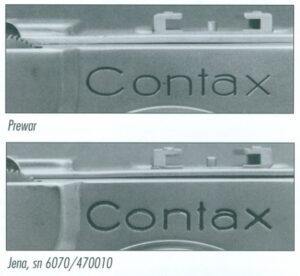 Serial numbers should be between 6000 and 30000, but some cameras have two sets of serial numbers, the first will be the Zeiss serial number, and second would be a Soviet-type number in which the first two digits indicate the year it was made (for example 47xxxx).
Serial numbers should be between 6000 and 30000, but some cameras have two sets of serial numbers, the first will be the Zeiss serial number, and second would be a Soviet-type number in which the first two digits indicate the year it was made (for example 47xxxx).- The standard lens on the Jena Contaxes was a new 50mm f/2 “T-coated” Carl Zeiss Jena Sonnar. These would have been the first coated lenses to appear on any Contax. Since the lenses are interchangeable, the presence or absence of this lens does not prove or disprove authenticity, but should be included to complete a camera.
- The Contax logo on the front of the camera has a heavier engraving with thicker lines. Some changes to the letter ‘a’ have been observed. This is also not a definitive change as these were done with little quality control, so there are differences.
 Corners of the accessory shoe are right angles, rather than curved like prewar Contaxes. This is not a definitive change however, as some prewar spare parts were used, so an accessory shoe may look identical to one from a prewar Contax but should never look like a Kiev camera.
Corners of the accessory shoe are right angles, rather than curved like prewar Contaxes. This is not a definitive change however, as some prewar spare parts were used, so an accessory shoe may look identical to one from a prewar Contax but should never look like a Kiev camera.- The raised piece of metal behind the self-timer lever is painted black instead of chrome plated.
- The back leather is plain with no Zeiss-Ikon logo.
- Film door is made of brass instead of aluminum and is much heavier (approximately 180 grams instead of 115 grams).
- Rewind release button is completely different. It is a single flat piece with concentric circles engraved.
- Combined viewfinder and rangefinder window is brighter and tinted gray without any color. Prewar cameras have a green tinted viewfinder with gold tinted rangefinder patch. The change in color is due to the use of gold flakes in the prewar cameras and the use of chromium in the Jena cameras.

The Jena Contax (below) has a duller, less reflective finish than the prewar Contax II (above). - Balance foot is completely different. Jena Contaxes have a flatter solid piece of metal with horizontal engravings on both sides.
- Square tripod bushing has finer concentric circles which are much closer together than prewar cameras.
- Chrome finish is duller and less reflective compared to prewar cameras. This is especially noticeable when the two cameras are side by side.
Why Do So Many Fake Contaxes Say “Zeiss-Ikon” on the Front?
A telltale sign of nearly all fake Contaxes is that they have a Zeiss-Ikon logo stamped into the front plate, to the right of the rangefinder window, but why?

Although no known “official” Contaxes ever had a logo in this position, a curious example in an English language Contax II and III manual was printed with a logo up front. According to one source I found online, this manual was printed in 1948 for US imports of Contax cameras, however an alternate version of the same manual which appears in Mike Butkus’s camera manual site clearly credits the camera to Zeiss-Ikon AG Dresden, suggesting this was a prewar print. The story that this was a 1948 print is suspicious as Zeiss-Ikon in Dresden wasn’t making Contaxes at that point and any supply of prewar Contaxes would likely have been so small, exporting them wouldn’t have made any sense.
It is far more likely this manual was printed in the 1930s for the original run of Contax II and III cameras for the US or other English speaking markets. Further supporting the idea that this manual was from before the war is the serial number on the illustration dates the lens to early 1936 which was when the Contax II was first released.
Although the manual is real, no Contaxes have ever been found with a logo in this location. The best theory is that one was constructed this way for use in the manual, or perhaps the logo was hand drawn in for the manual. That the manual is in English supports that it might have been used for US imports, and perhaps including a Zeiss-Ikon logo in such a prominent location could have been used to reinforce the reputation of the Zeiss-Ikon brand. At whatever point Ukrainian counterfeiters decided to create fake Contaxes, perhaps this manual was used as an inspiration, believing it to be how the cameras actually looked.
After the Jena Contax
While it might seem that the production of the Jena Contax was but a footnote in camera production in and around the city of Jena, other camera products were made there. After the last Contax was assembled in Jena, some work was done on future cameras.
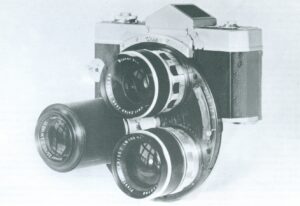
One such exciting camera was a very ambitious 35mm SLR called the Wica. The Wica was developed for scientific and industrial applications and had several innovative features. It came with a turret lens mount, a clockwork wind up film transport, and even featured a TTL selenium meter mounted to a swinging arm that would move in and out of the way of the light path right in front of the shutter. No examples of this camera are known to exist today, only a couple pictures in Zeiss documentation.
Another prototype camera which was worked on in 1959 was a universal camera called the Unica. It was a folding bed sheet film rangefinder with an interchangeable lens mount. At least 5 different lenses were made by Zeiss in Jena for the prototype which suggests it was close to being put into production. Prototypes of the Unica shared a strong resemblance to the Linholf-Technika which might provide a hint to why it was never released, as it was too close to something that already existed.
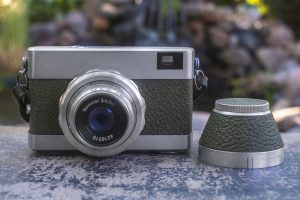
There was one more Carl Zeiss Jena camera, and it didn’t stop at the prototype stage. The famed Carl Zeiss Werra was a compact 35mm interchangeable lens camera (later adding a rangefinder) that went into production in 1954 and continued until 1968.
A large variety of Werras were produced in the 14 years they were made, including exposure meters, rangefinders, and, for a brief moment, even a Werra based SLR was planned.
While it is not fair to say that the Jena Contax is directly responsible for the Werra, it at least opened the door to camera production in an area which previously was primarily known for making lenses.
Carl Zeiss Jena Contax II # 11884
The inspiration for this article was getting a chance to see a confirmed Jena Contax which is in the private collection of Jo Geier from Mint & Rare Cameras in Vienna, Austria. As I write this, the camera is not for sale, but if it ever does go on the auction block, I suspect it will demand quite a high premium both for its rarity and condition.
Jo gave me permission to use images of his camera in this article, and although I did not get a chance to handle it myself, he provided the photos and answered any questions I had about it. I have already sprinkled several images of the camera throughout this article, but here are a few more for your viewing pleasure.
What Did I Get Wrong?
The research and analysis of the Jena Contaxes is still ongoing and new information is still being discovered. What we know today is different from what we knew 20, 10, or even 5 years ago. While writing this article, I attempted to find other resources online which had info about the Jena Contaxes and there really is only one article, which I chose not to link here as I disagree with a large amount of information in that article. That’s not to say the author of that article did anything wrong, rather the information that they had available to them when the article was written, isn’t the same as what we have today.
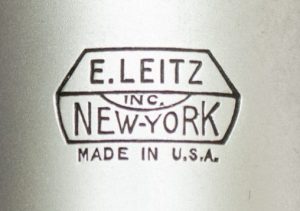
For those who collect German cameras, the differences between digging into the history of the Leica compared the Contax is night and day. Where Leitz intentionally kept detailed records since the start of camera production, Zeiss wasn’t nearly as thorough. In addition, the Leica was made in Wetzlar which was not in a strategic location for bombing raids during the war, so the company did not see as many losses during the war. When the war ended, it was located in what would become West Germany which saw much better support from Allied governments which allowed for better historical retention.
Zeiss-Ikon in Dresden and Carl Zeiss in Jena were both located in heavily targeted areas by Allied forces, and in the case of Dresden, was heavily bombed and destroyed. Making matters worse, when the Soviet government arrived, any records that might have survived were seized and either destroyed, or classified to the point where their contents have yet to resurface.
To tell the history of a camera which wasn’t supposed to exist like the Jena Contax is extremely difficult. I have complete confidence that some portion of what I’ve shared with you here still misses the mark, and if it hasn’t, that’s only because we probably haven’t learned all there is to learn. As new information is discovered, I will do my best to update this article and try to include the most complete and historically accurate information I can. If you have additional information which tells more of the story, please let me know either in the comments section below or by using the Contact form.

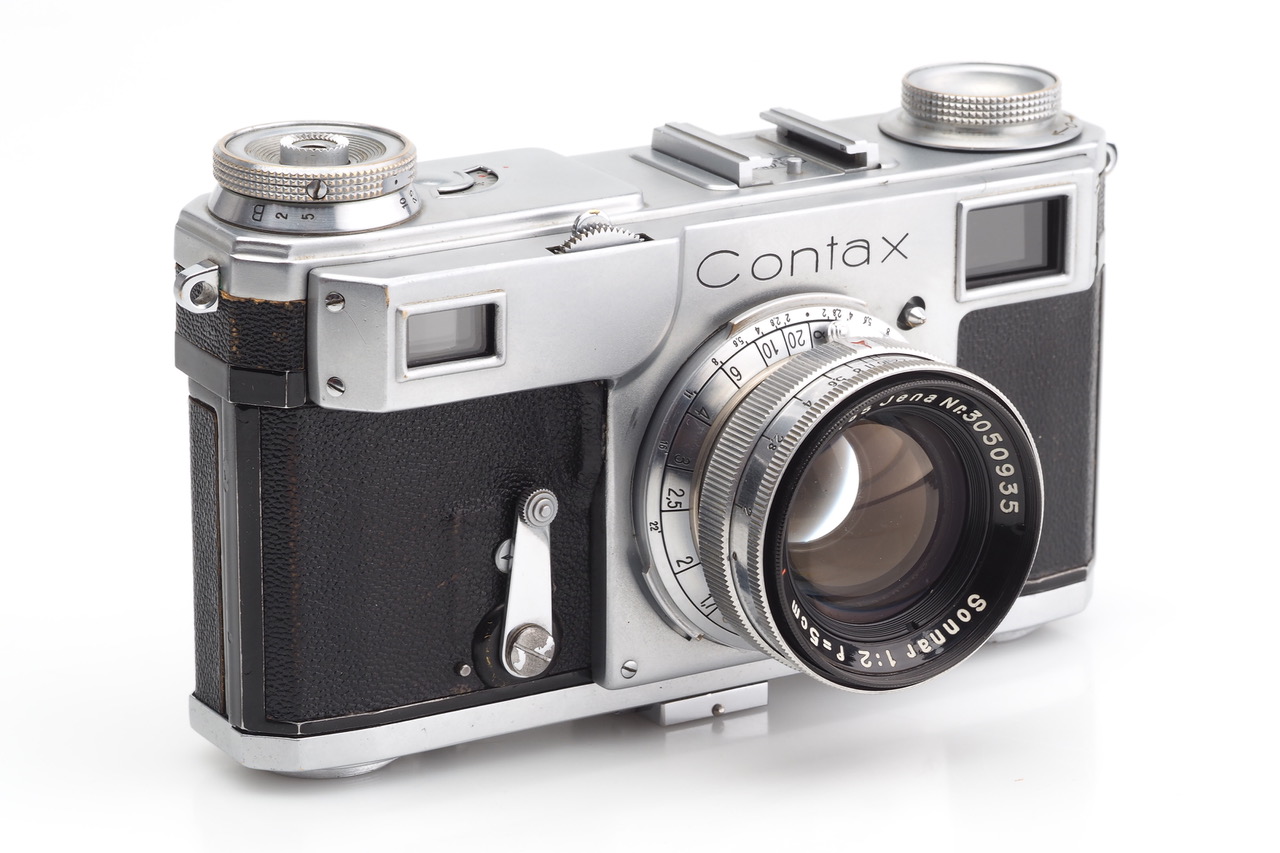
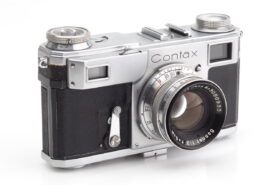







Wow!! Extremely interesting and I commend you on your thorough research. A great look at a camera most will never see,
only in these pics.
Gary Hill
Thank you Gary! I had as much fun researching it as I hope you did reading it!
Everyerytime I read your posts, I’m blown away. I learn so much from these, it’s wonderful. Thank you for the time and effort you put into your website. I stand and applaude you….
Congratulations to you for moving the written and public record forward in this way. Congratulations on your good work for the community. Tom Zoss
Great article. Very well researched.
Thanks for this Mike! I recently came into possession of a pre-war Contax II with a C serial number, making it 1936/37 production. It was originally owned by a US Army Colonel who was part of the Normandy invasion, and is in as new condition. I had it serviced by Oleg Kalyavin in Slovakia, so it should give me many more years of reliable service. Mine has the 2.8/5cm Tessar lens which although uncoated is a great performer.
Oleg is highly skilled at repairing these cameras and I am sure he did a wonderful job with yours. It makes me happy to know that theres one more of these wonderful cameras out there being used!
I have heard of Contex, which is printed with the logo of ussr occupied germany. Was this camera produced in Jena?
I am assuming you meant Contax instead of Contex as there was never a camera with that name. As for genuine cameras, no East German Contax rangefinders were ever made that would say “USSR Occupied Germany”. The SLR Contaxes might have, but not the rangefinders.